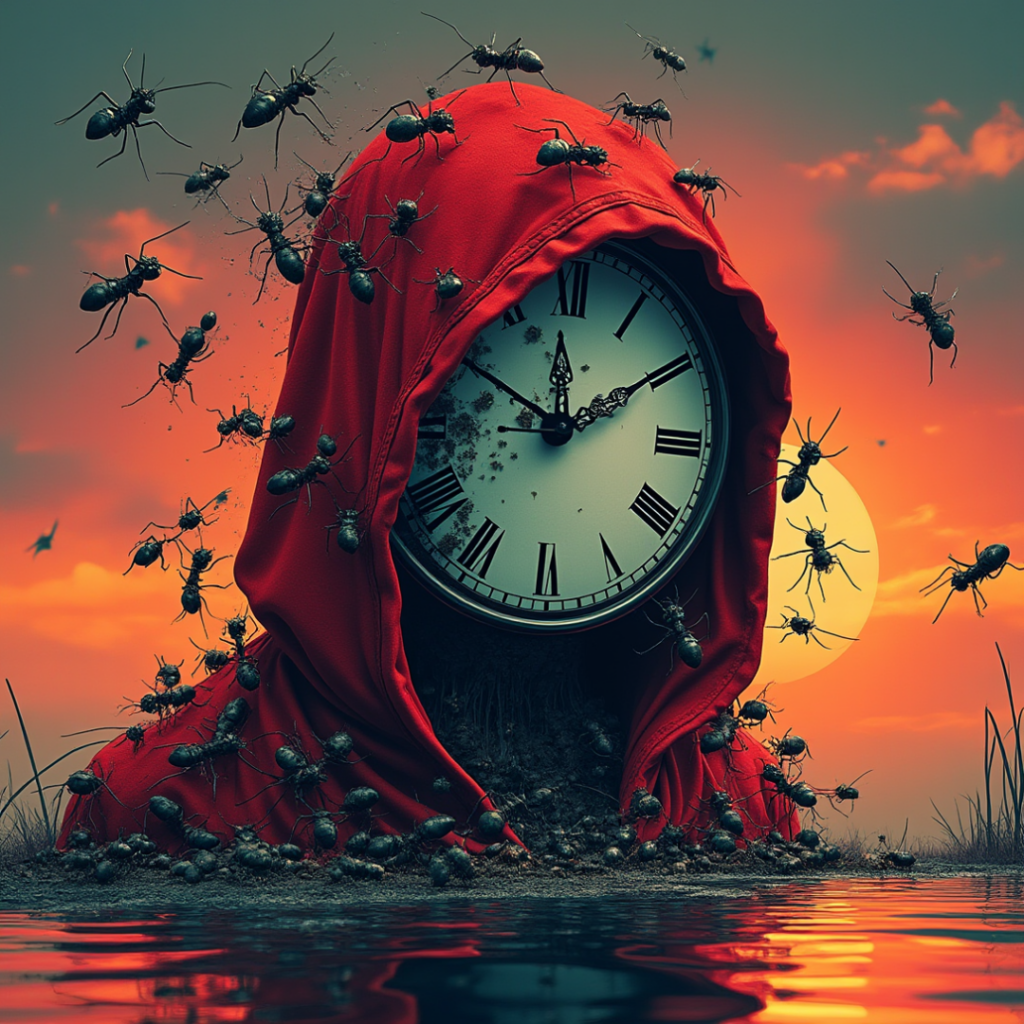 Lauren McBride
Lauren McBride
Dreaming of Dalí
In that dream, nothing made sense –
not the great, eyeless face,
nor the missing mouth,
nor the ants, always ants
fascinating, fearsome,
frenzied, swarming
ants being eaten,
or eating . . .
eating a face –
eating up time,
time on a beach
of melting watches –
watch faces and eyeless
faces melting together,
putrefying in a dream of death
and Dalí – the dream in time melting away.
{Inspired by two paintings, ‘The Dream’ and ‘The Persistence of Memory,’ by Salvador Dalí}
_______________
Lauren McBride is author of the chapbook Aliens, Magic, and Monsters (Hiraeth, 2023). Nominated for the Best of the Net, Pushcart, Rhysling, and Dwarf Stars Awards, her poetry has appeared internationally in speculative and mainstream publications including Asimov’s, Fantasy & Science Fiction, and Utopia Science Fiction’s 5th Anniversary Anthology. She enjoys swimming, gardening, baking, reading, writing, and knitting scarves for U.S. troops.
Backstory & Author’s Comments: “Dreaming of Dalí” was inspired by an ekphrastic poetry prompt based on the painting “The Dream” by Salvador Dalí. While researching Dalí, I realized that I was familiar with another of his paintings, “The Persistence of Memory,” which had long fascinated me with the image of watches melting on a beach. After observing ants in the two paintings, I decided to incorporate both in my poem by focusing on the common elements of ants and faces.
Further research revealed the artist’s fear of and obsession with death, decay, and purification, as well as ants (and other insects), details I included to develop the poem.
The poem’s form evolved with each rewrite, beginning with free verse, and ending with the hourglass shape as a play on the theme of time.
Editor’s Comments and Image Credit: The description and link to the inspiring work of Salvador Dalí are listed below:
The Dream gives visual form to the strange, often disturbing world of dreams and hallucinations. Ants cluster over the face of the central figure, obscuring the mouth, while the sealed, bulging eyelids suggest the sensory confusion and frustration of a dream. The man at the far left—with a bleeding face and amputated left foot—refers to the classical myth of Oedipus, who unwittingly killed his father and married his mother. The column that grows from the man’s back and sprouts into a bust of a bearded man refers to the Freudian father, the punishing superego who suppresses the son’s sexual fantasies. In the distance, two men embrace, one holding a golden key or scepter symbolizing access to the unconscious. Behind them, a naked man reaches into a permeable red form, as if trying to enter it. https://www.clevelandart.org/art/2001.34
The Persistence of MemoryThe well-known surrealist piece introduced the image of the soft melting pocket watch. It epitomizes Dalí’s theory of “softness” and “hardness”, which was central to his thinking at the time. As Dawn Adès wrote, “The soft watches are an unconscious symbol of the relativity of space and time, a Surrealist meditation on the collapse of our notions of a fixed cosmic order”. This interpretation suggests that Dalí was incorporating an understanding of the world introduced by Albert Einstein’s theory of special relativity. Asked by Ilya Prigogine whether this was the case, Dalí replied that the soft watches were not inspired by the theory of relativity, but by the surrealist perception of a Camembert melting in the sun. https://en.wikipedia.org/wiki/The_Persistence_of_Memory
Image Credit: A surreal composition featuring ants eating a distorted clock-faced figure in a red hood overrun with ants, set at sunset by a reflective water surface, with a vibrant gothic style (Wixel by Wix.com)
